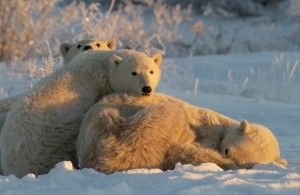There has been much discussion recently about polar bears starving and dying as a result of global warming and climate change. The Telegraph (UK) ran a story entitled Cancun climate change summit: climate change killing polar bears that linked to a (warning: difficult-to-watch) video taken by Daniel J. Cox of Natural Exposures, which showed a polar bear cub dying. Cox’s original blog post: Mother polar bear loses her two one year old cubs most likely to starvation, drew a number of negative comments, including questions from blogger Tom Nelson, which Cox responded to on the Natural Exposures site here. Cox also continued to respond to comments with a blog post entitled: Outpouring of concerns over the starving polar bear family. Senior Polar Bears International scientist Steven C. Amstrup also provided some detailed insights into the feeding of wildlife and the plight of the polar bears with regards to global warming.
We would be very interested in what our readers think about the articles and blog posts above, and the story below, which took place at Dymond Lake on the Great Ice Bear Tour, and which originally appeared in the book Wapusk: White Bear of the North (Heartland Publications – January 2003). The article is reprinted here with permission of authors Rebecca L. Grambo and Dennis Fast. Dennis is Churchill Wild‘s chief photographer and guide and the story below is his poignant recollection of the final days of a mother polar bear and her cubs.
PRELUDE TO A REQUIEM
Mid-October brings snow, bears and visitors to the edge of Hudson Bay. The visitors are there to watch for bears and the bears are there to wait for the ice and snow. For those of us with cameras, a fresh snowfall creates refracted diamonds that glitter on the tundra and decorate the willows; for the bears, who have fasted since June, it’s a harbinger of much-needed months of feasting.
Though they are regular visitors at this time of year, the bears do not appear on command. Lodges in the area must provide alternative entertainments for guests, some of whom have traveled halfway around the globe. One such diversion is a hike into the nearby transitional forest for a bannock roast over an open fire. As we’re about to leave for the hike, someone spots a polar bear across the lake behind some willows. Binoculars appear and soon it’s clear there are two bears, barely visible, moving behind the ridged edge of the lake. Another ten minutes and a mother and cub move into full view and she heads down the esker toward the lodge. Suddenly, a second cub appears.
Moments later the bears have gathered beneath the picture window of the lodge as shutters click and video cameras whirr. The excitement is quickly tempered, as we realize that the mother is emaciated and in very poor shape. We wonder whether her rather large satellite collar has kept her from eating properly last winter. It certainly seems that it might have impeded her attempts to catch seals at breathing holes. Whatever the reason, she looks gaunt. But the cubs seem to be fine, she has looked after them well. After a few minutes, she turns and leads them back across the lake, where she settles down in the willows to rest.
The next morning, they are still there and in the early morning light, we photograph them framed by fresh hoarfrost. Only the arrival of a helicopter bearing new guests sends them hurrying out of sight.
They return in the afternoon, but this time their visit is complicated by the appearance of a rather aggressive male, perhaps five years old. Late at night, the family again makes its rounds, then retires just thirty meters from the window.
At noon, while we are waiting for lunch, the cubs suddenly saunter through camp. I can see the mother slowly shuffling through some willows, as the cubs encircle the entire lodge, wandering well out onto the lake. Suddenly, they realize they are farther from their mother than ever before and panic sets in. They run in opposite directions, rearing up on their hind legs and peering about. Even when they spot her, they seem not to recognize her. The larger cub circles downwind and, catching her scent, dashes to join her. But the smaller cub is in a panic. He bounds through camp, paying no attention to me as he races by. All the while he is barking and mewing like a lost puppy, running in huge circles as he smells the air and the ground for clues to her whereabouts. When he finally spots her, he seems not to be able to believe his eyes. He circles once more and, finally picking up her strong scent, rushes to join his family. Peace slowly returns, but now I can easily imagine the even more traumatic experience that awaits the cubs.
The following day, one of our party spots the trio as he walks through the willows. Mother does not move, even though he is just meters away before he sees her. Another day passes, with no sign of her. Now, we cautiously approach. She lies, her head stretched out, the snow beginning to accumulate on her neck and back. The cubs are still leaning on her for support, but there is no warmth there, no leadership to determine their next move. They cling to her, grief and anxiety apparent on their faces.
I photograph the family for the last time and contemplate what the future holds for the cubs. Without their mother, their chances for survival are considerably reduced. At worst, they face a slow lingering death by starvation, or a quick losing battle with a large male, who will target them to ease his own hunger. Their chances of finding enough food to sustain both of them, and avoiding the perils of life on the bay are slim. Statistics say that at least one of them will not make it through the winter. Mother Nature is cruel, only to be kind.
It is rare to witness the death of a polar bear. Only two, that I know of, have been found. The rest disappear, perhaps dying out on the ice to be swallowed by the sea, perhaps quickly salvaged by other creatures in need. We finish the morning with a walk to the coast and then I sit down to try to put the morning’s experience in perspective.
Animals die every day. Right now, some polar bear mother is struggling to meet the needs of as many as three cubs. But it’s easy to rationalize, easy to intellectualize, not so easy to put this moment out of mind. The death of a magnificent animal is always deeply moving, perhaps because it is such a powerful reminder of our own mortality. May I die so eloquently.
The following day, a Natural Resources helicopter arrives to deal with the dead mother bear. As the confused and terrified cubs run across the lake, the helicopter lifts her body and heads north, carrying it up the coast. The rest of the day, the cubs repeatedly come through camp and wander the lake and surrounding tundra. This brings a series of standoffs with another bear that is also in the area.
At dinner, one of the cubs suddenly appears at the dining room window, peering longingly at the bountiful food on the table. We all feel both compassion and guilt, but we must drive it away, for we can not encourage its presence near the lodge. Already the cubs seem bolder and more aggressive without their mother to caution them, and the smaller one takes a series of runs at one of the staff members as he pumps water from the lake. Though the cubs are not yet two, they are as large as an average-sized black bear, and could certainly be dangerous.
EPILOGUE
The cubs remained around the lodge until November, dodging large males and trying to interact with other mothers and cubs as they moved through the area. Natural Resources officers attempted to relocate the cubs out on the newly-formed ice on Hudson Bay, but they quickly found their way back to the lodge.
They were still there when the lodge closed for the season. Whether they survive or not depends on the lessons they learned from their mother. If she had begun to teach them to hunt during their first winter on the ice, they have at least a fighting chance of survival. If not, they are surely doomed. Their mother, it was determined from information gathered from her radio collar, was twenty-four, a ripe old age for a wild bear. She did her duty to the very end.
— Dennis Fast











Dennis … Thank you for sharing this. It is beautifully written and a moving piece. We can only hope that we all find a way to protect the environment so these beautiful, powerful animals can continue to exist.